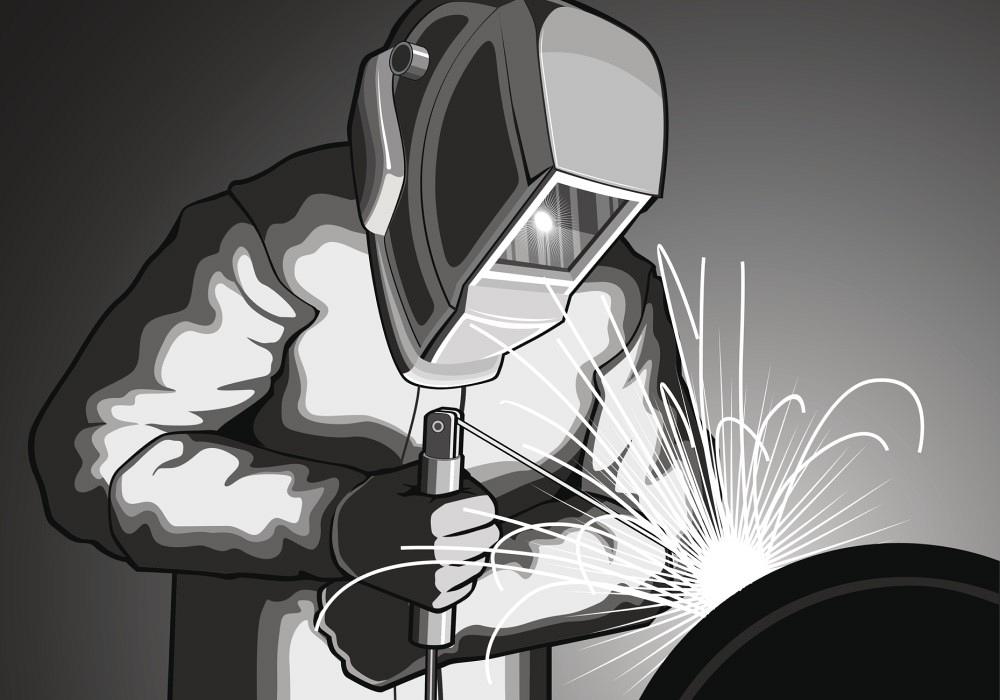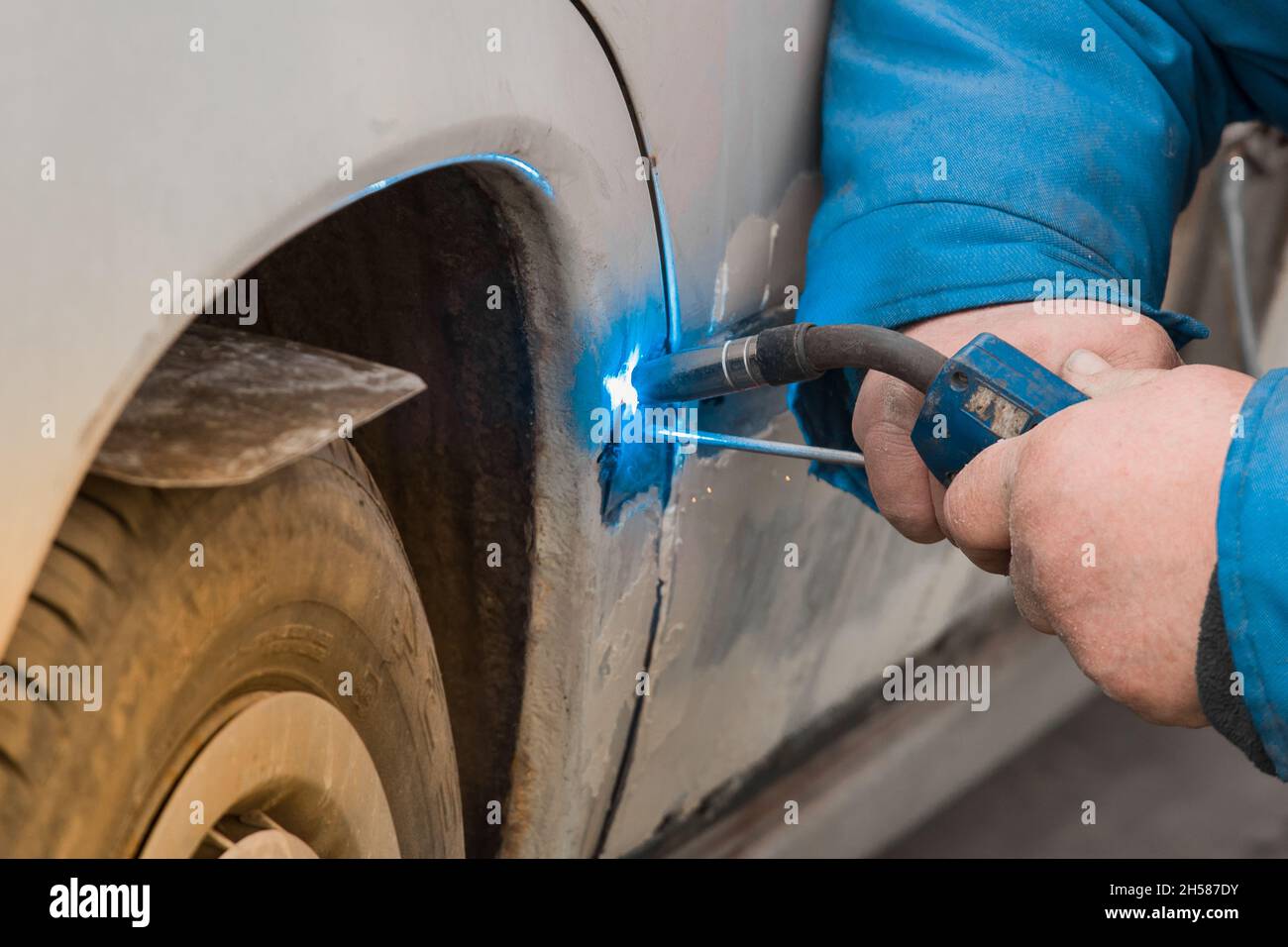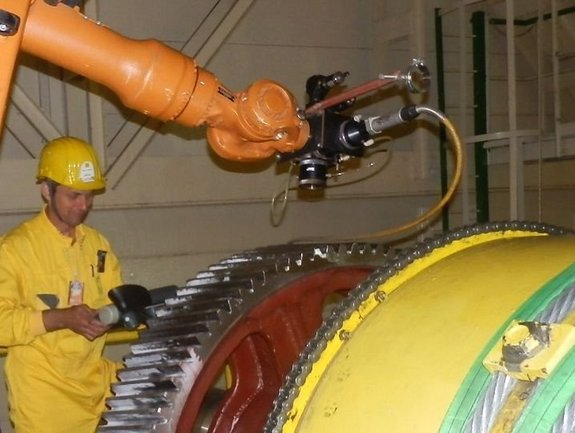Usual Welding Repair Issues and Just How to Address Them Efficiently
Welding repair services frequently encounter a series of concerns that can endanger the integrity of the last item. Common problems consist of poor penetration, porosity, and imbalance, amongst others. Each flaw offers special difficulties that require details techniques for resolution. Understanding these issues is essential for welders aiming to boost their skills and outcomes. This conversation will certainly explore these typical welding repair issues and efficient approaches to address them.
Insufficient Infiltration
Insufficient infiltration happens when the weld steel stops working to completely fuse with the base material, leading to weak joints and prospective structural failings. This problem usually originates from not enough warm input, wrong electrode angle, or improper welding speed. Welders might come across insufficient infiltration because of a mistake of the required parameters for a certain product density or type. Furthermore, contamination on the base product's surface area can impede efficient bonding, intensifying the trouble. To resolve insufficient penetration, welders must assure suitable setups on their devices and keep a clean job surface. Regular inspection of welds is advised to recognize any type of deficiencies early, permitting timely corrections and the prevention of endangered structural honesty in bonded settings up.
Porosity
Porosity is a typical problem in welded joints that shows up as small gas bubbles caught within the weld steel. This issue can compromise the honesty of the weld, bring about reduced strength and potential failure under anxiety. Montana Mobile Welding and Repair Fabrication. Porosity typically arises from contamination, moisture, or improper welding methods, which allow gases to leave right into the liquified weld swimming pool. To deal with porosity, welders ought to assure proper surface prep work, keep a clean working environment, and make use of appropriate welding specifications. Furthermore, selecting the ideal filler material and securing gas can reduce gas entrapment. Routine examination and screening of welds can help determine porosity early, ensuring timely rehabilitative activities are taken, consequently maintaining the quality and integrity of the welded framework
Imbalance
Imbalance in welding can arise from numerous variables, consisting of inappropriate arrangement and thermal growth. Comprehending the source is vital for reliable resolution. Numerous correction methods are available to straighten elements and ensure architectural honesty.
Root causes of Misalignment
Welding misalignment frequently originates from a selection of underlying problems that can compromise structural stability. One main cause is improper fit-up of components prior to welding, which can result in spaces and unequal surface areas. Variants in thermal growth during the welding procedure can additionally result in distortion, particularly if the products being joined have various coefficients of expansion. Additionally, inadequate securing and fixturing may fall short to hold elements securely in position, bring about activity during welding. Improperly conserved equipment, including welding makers and devices, may introduce incongruities in the weld grain, further contributing to misalignment. Driver error, stemming from inadequate training or experience, can additionally play a substantial duty in developing misaligned welds.

Adjustment Methods Offered
Dealing with misalignment successfully needs a mix of rehabilitative methods tailored to the specific issues at hand. One typical technique is the use of jigs or components to hold components in the correct placement throughout welding, making sure regular alignment. In addition, pre-heating the products can help in reducing distortion and improve fit-up. For significant misalignment, mechanical realignment techniques, such as using hydraulic jacks or clamps, can be used to correct the position before welding. Post-weld warmth treatment may likewise be essential to soothe stress and anxieties triggered by misalignment. Mindful inspection and change throughout the configuration phase can stop imbalance problems from ending up being substantial issues, advertising a smoother welding procedure and boosting general architectural stability.
Distortion
Distortion is an usual difficulty in welding that can emerge from numerous variables, consisting of unequal home heating and air conditioning. Recognizing the reasons of distortion is crucial for implementing efficient prevention strategies. Addressing this problem not just boosts architectural honesty yet likewise boosts the overall high quality of the weld.
Root causes of Distortion
When based on the intense warm of welding, materials usually go through adjustments that can lead to distortion. This phenomenon largely occurs from thermal development and contraction throughout the welding process. As the weld area warms up, the material broadens; upon air conditioning, it acquires, which can develop interior stresses. Furthermore, unequal home heating throughout a workpiece can aggravate these stress and anxieties, resulting in bending or bending. The kind of product additionally plays a substantial function; steels with varying thermal conductivity and coefficients of growth may respond differently, resulting in unpredictable distortions. Moreover, inadequate joint design and inadequate fixturing can add to imbalance during welding, boosting the chance of distortion. Comprehending these causes is crucial for effective welding repair and prevention techniques.
Avoidance Techniques
Reliable avoidance techniques for distortion during welding emphasis on regulating warmth input and guaranteeing appropriate joint design. Preserving a constant heat input assists to lessen thermal development and contraction, which can lead to distortion. Utilizing strategies such as preheating the work surface can additionally lower the temperature gradient, advertising consistent heating. Furthermore, choosing ideal joint styles, such as T-joints or lap joints, can improve security and reduce tension concentrations. Executing proper fixturing to protect the work surfaces in area further help in preserving alignment during the welding procedure. Staggered welding sequences can disperse warmth a lot more evenly, preventing localized distortion. By applying these techniques, welders can considerably reduce the possibility of distortion and enhance the overall top quality of their welds.
Fracturing
Breaking is an usual issue run into in welding repairs, usually resulting from numerous variables such as improper air conditioning rates, product selection, heliarc welding or insufficient joint preparation. The event of splits can substantially compromise the integrity of the weld, resulting in possible failures throughout procedure. To address this concern, welders must first assess the source, making sure that products are suitable and properly picked for the specific application. Furthermore, managing the cooling price throughout the welding procedure is crucial; fast cooling can generate anxiety and cause splitting. Correct joint layout and prep work also add to lessening the danger. Implementing these approaches can enhance weld top quality and durability, eventually reducing the possibility of fracturing in completed weldments.

Insufficient Blend
A substantial problem in welding fixings is insufficient fusion, which takes place when the weld metal does not adequately bond with the base product or previous weld passes - Montana Mobile Welding and Repair Belgrade. This flaw can cause weaknesses in the joint, possibly jeopardizing the stability of the welded framework. Variables contributing to insufficient fusion include inadequate warmth input, improper welding technique, and contamination of the surface areas being signed up with. To address this problem properly, welders should ensure correct pre-weld cleaning and surface preparation, along with adjust their welding parameters to attain adequate penetration and combination. Normal evaluation throughout the welding procedure can also help recognize insufficient combination early, enabling timely corrective steps to improve the total top quality of the weld
Overheating
While welding fixings can improve structural integrity, overheating presents a substantial difficulty that can bring about product destruction. Too much warm during welding Related Site can alter the mechanical residential properties of steels, leading to decreased strength, enhanced brittleness, and warping. This phenomenon is particularly crucial in high-stress applications where structural dependability is vital. Determining overheating can include visual evaluations for staining or distortion, along with checking temperature during the welding procedure. To alleviate the dangers connected with getting too hot, welders ought to employ ideal strategies, such as regulating warmth input, readjusting traveling speed, and using ideal filler materials. Additionally, applying pre- and post-weld warm treatments can help recover product residential properties and boost the general top quality of the fixing, making certain lasting performance and security.
Often Asked Questions
What Are the Common Signs of a Welding Defect?

Exactly How Can I Examine My Welds for High quality?
To check welds for top quality, one can utilize aesthetic evaluations, ultrasonic screening, and radiographic techniques. Each technique ensures structural stability, determines defects, and confirms adherence to specified criteria, ultimately improving the dependability of the bonded joints.
What Safety Safety Measures Should I Take While Welding?
When welding, one should prioritize safety by putting on ideal individual safety equipment, ensuring correct air flow, safeguarding flammable materials away, keeping a tidy work area, and understanding environments to stop mishaps and injuries.
Can I Repair a Weld Without Redoing the Entire Joint?
Repairing a weld without remodeling the entire joint is possible, depending on the damage (Montana Mobile Welding and Repair Belgrade Welding). Strategies such as grinding, including filler material, or making use of a welding procedure can properly deal with specific problems while protecting the bordering structure
What Equipment Are Necessary for Reliable Welding Services?
Necessary devices find for effective welding repair work include a welding maker, cord brush, mill, safety equipment, clamps, and filler products. Each tool plays a crucial function in making certain high quality and safety and security during the fixing process. Porosity commonly emerges from contamination, dampness, or incorrect welding methods, which enable gases to leave into the molten weld swimming pool. Poorly conserved devices, consisting of welding makers and devices, might present disparities in the weld bead, further contributing to misalignment. When subjected to the extreme heat of welding, products usually go through adjustments that can lead to distortion. Fracturing is a common issue come across in welding fixings, often resulting from numerous variables such as incorrect air conditioning rates, product selection, or inadequate joint prep work. A substantial concern in welding repairs is incomplete combination, which takes place when the weld metal does not sufficiently bond with the base material or previous weld passes.